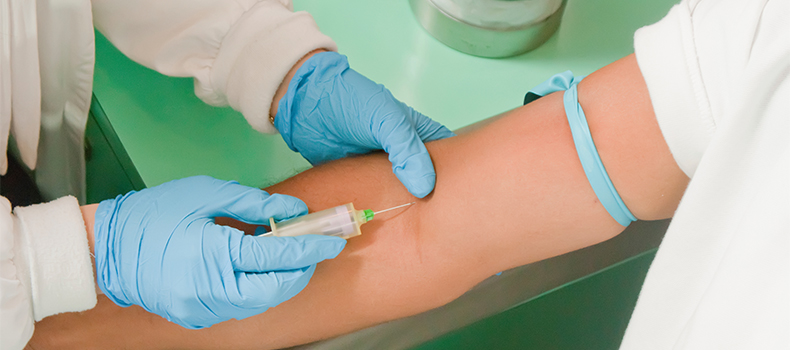How to Become a Certified Phlebotomist: Essential Training Tips & Career Guide
Embarking on a career as a certified phlebotomist can be a rewarding journey into the healthcare field. it combines a vital skill-drawing blood-with excellent job prospects and the opportunity to make a difference in patients’ lives. If you’re interested in turning your compassionate nature into a healthcare career, this extensive guide will walk you through the essential steps, training tips, certification processes, and career outlook for aspiring phlebotomists.
Introduction
The role of a phlebotomist is crucial in medical diagnostics, patient care, and medical research. Their primary duty is to collect blood samples efficiently and safely, ensuring the comfort and safety of patients. Becoming a certified phlebotomist involves dedicated training, certification, and practical experience. This guide aims to help you understand the path to certification, prepare effectively, and build a accomplished career in this healthcare specialty.
Why choose a Career as a Certified Phlebotomist?
- High Demand: The healthcare sector continues to grow, increasing the need for skilled phlebotomists.
- Competitive Salary: Average salaries range from $30,000 to $40,000 annually, with potential for higher earnings with experience.
- Rewarding Work: Helping diagnose illnesses and improving patient outcomes gives a sense of purpose and fulfillment.
- Flexible Work Opportunities: Opportunities exist in hospitals, clinics, laboratories, and blood donation centers.
Steps to Become a Certified Phlebotomist
1. Meet Basic Eligibility Requirements
Before starting your training,ensure you meet the educational and age requirements:
- High school diploma or equivalent (GED)
- Minimum age of 18 years (varies by state)
- Clear background check and health screenings
2. Enroll in a Certified Phlebotomy Training Program
Choosing the right training program is essential. Look for programs accredited by organizations such as the National Accrediting Agency for Clinical Laboratory Sciences (NAACLS) or American Society for Clinical Pathology (ASCP). These programs typically cover:
- Anatomy and physiology of the circulatory system
- Blood collection techniques
- Safety protocols and infection control
- Patient interaction and dialog skills
- Legal and ethical considerations
3. Gain Practical Experience
Hands-on practice is vital for developing confidence and competence. Many training programs include clinical externships where you’ll work under supervision in real healthcare settings. During this stage,focus on:
- Venipuncture techniques
- Capillary blood collection
- Proper labeling and handling of specimens
- Patient comfort and communication
4. Obtain Certification
Certification enhances job prospects and validates your skills. Some of the most recognized certifying bodies include:
| Certification Body | requirements | Exam Details |
|---|---|---|
| National Healthcareer Association (NHA) | Completion of approved training + minimum 1 year of experience (or equivalent) | Written exam with multiple-choice questions |
| American Society for Clinical Pathology (ASCP) | Certified Phlebotomy Technician (PBT) exam after completion of training | Computer-based exam |
| National Phlebotomy Association (NPA) | Proof of completed training and clinical practice | Written exam + practical assessment |
Practical Tips for Aspiring Phlebotomists
- Focus on patient communication: Building rapport helps reduce patient anxiety and makes blood draws easier.
- Practice regularly: Master venipuncture and capillary collections to gain confidence.
- Prioritize safety: Always follow OSHA guidelines for infection control and needle handling.
- Stay updated: Continue education through workshops, certifications, and industry news.
Benefits of Certification
- Increased employability and competitive advantage
- Higher earning potential
- Recognition as a qualified healthcare professional
- Opportunities for career advancement in healthcare
Case Study: A Successful Pathway to Phlebotomy Certification
Maria, a 22-year-old recent graduate, decided to pursue a career in healthcare. She enrolled in an accredited phlebotomy program, completed her clinical externship at a local hospital, and obtained her certification through NHA. Within six months, Maria secured a position at a reputable laboratory, earning a competitive salary and gaining vital experience. Her story highlights the importance of proper training, certification, and dedication in building a successful phlebotomy career.
First-Hand Experience and Practical Tips
many aspiring phlebotomists find that hands-on experience is the most effective way to learn.Hear are some practical tips shared by professionals:
- Start practicing on friends or family members for initial comfort and technique refinement.
- Use simulation kits if available to perfect your skills before working with real patients.
- Always double-check patient details and specimen labels to avoid errors.
- Maintain a calm and professional demeanor,especially when dealing with anxious patients.
Building your Career & Continuing Education
After certification, consider specialization options such as pediatric phlebotomy or donor phlebotomy. Additionally,pursuing further education in medical laboratory science or healthcare management can open doors to advanced roles.
Final Thoughts
Becoming a certified phlebotomist is a rewarding pathway into healthcare, combining technical skill with patient care. By following the steps outlined-enrolling in accredited training, gaining hands-on experience, obtaining certification, and continuously improving your skills-you can build a successful and fulfilling career in this essential medical field. Remember, dedication, compassion, and professionalism are key to excelling as a certified phlebotomist.
Ready to Start Your Journey? Key Takeaways
- Meet basic eligibility requirements and choose an accredited training program.
- Gain practical experience through externships or on-the-job training.
- Pass a recognized certification exam to validate your skills.
- Continue learning and developing your expertise to advance your career.
